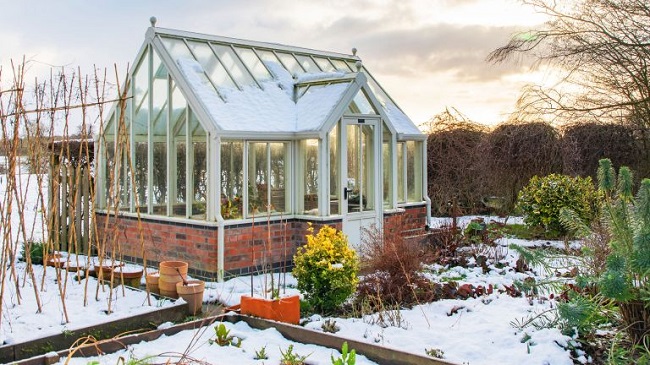
We’d all love to have fresh, summer vegetables all year round. One of the best parts of gardening or owning a greenhouse is the ability to enjoy homegrown vegetables. Still, those of us that live in Northern climates must deal with plunging temperatures and stubborn frosts every year. What can be done to extend the summer vegetable harvest past the hard freeze date?
Frost becomes widespread at temperatures below 32°F, but a hard freeze only occurs when temperatures fall below 28°F. In Northern states such as Montana, North Dakota, and Minnesota, the first hard freeze can occur as early as September of every year. When planting to extend the summer harvest, it is crucial that plants are started in the summer months. The summer months provide the necessary light and warmth needed to jumpstart plant growth. If you plant after the first hard freeze, it will be very difficult for your seedlings to receive the amount of light they require for healthy growth, which results in anemic and stunted plants.
Choosing which vegetables to grow is an important part of ensuring a steady harvest throughout the winter months. Dark, leafy vegetables do well at surviving frosts. Spinach, Brussels sprouts, broccoli, arugula, and kale are excellent choices to overwinter. Reddish-purple vegetables are notable for resisting rot caused by winter rains, making them excellent choices for gardeners in the Pacific Northwest. Rosalind broccoli, beets, and red cabbage all contain anthocyanin, which helps them resist rot. Unfortunately, garden staples such as tomatoes and peppers are not as suited to late harvests, as these plants thrive in conditions with excess warmth and moisture.
After picking out your vegetables, you need a place to grow them. Even the hardiest of cold-weather plants will begin to hibernate or eventually succumb to continuous hard freezes without some degree of cold protection. Cold frames are the simplest option for insulating winter plants. The most basic cold frame can be created with wood and an old window, though more advanced cold frames can be created if you’re willing to spend additional money. The interior of the cold frame is then further insulated with straw, thatch, or stone. The frame should be placed in an area that receives direct sunlight, and temperature should be monitored closely. If the cold frame gets too warm (over 45°F), crack open the top layer and allow some air to circulate. Finally, the trickiest part of growing in a cold frame is knowing when to water. Water should be withheld starting two weeks before the first frost, and the soil should never go beyond feeling slightly damp. If your plants are overwatered, the excess water will freeze, displacing the soil and damaging your plants.
For the growers who are truly serious about extending their harvest time, the next step up from cold frames is a greenhouse. Greenhouses function along the same principles as a cold frame, though at a much larger and much more energy efficient scale. Greenhouses also offer the ability to install heating devices, which allow the growth of plants that do not tolerate the cold. When determining where to place your plants, those that can tolerate cold weather conditions should be placed along the perimeter of the greenhouse. Plants that do not tolerate cold conditions should remain in the center. If you’re interested in building or upgrading a greenhouse for winter growing, Arcadia GlassHouse is an excellent place to start your search. Arcadia GlassHouse offers professional installation and energy-efficient designs that will take your winter growing to the next level.
Joshua Nichols is the MyGardenAndGreenhouse.com associate editor.
Related Articles & Free Email Newsletter
3 Great Types of Year-Round Greenhouse Produce
How to Get Started with Organic Gardening in a Greenhouse




Comment here